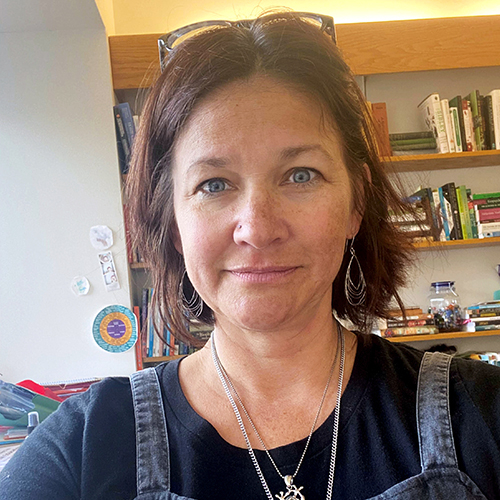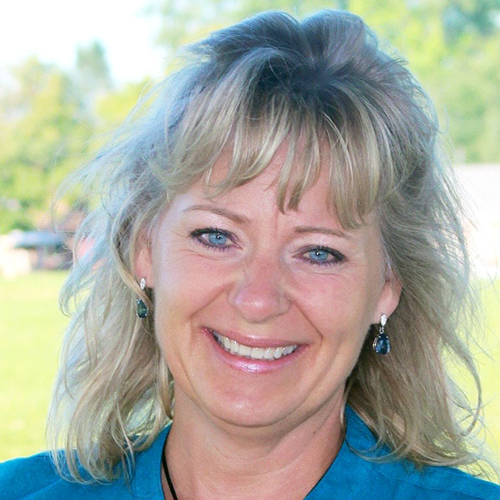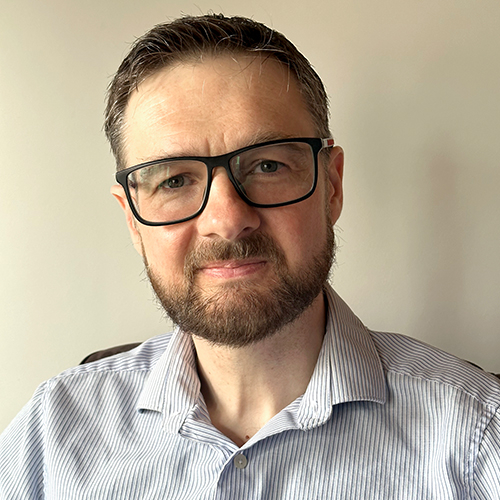GOLD Learning Early Years Online Symposium 2023
The GOLD Learning Early Years Online Symposium 2023 provides the latest evidence-based continuing education for health care professionals working with families with children aged 0-3 years. As research in the area of early childhood brain development and the importance of healthy relationships grows, it's more important than ever for health care professionals to stay up to date. Professionals have an important role to play in supporting healthy childhood environments that promote optimal brain development and mental health for infants and young children.
Advance your knowledge on early experiences and brain development, the latest on the neuroscience of play, how to support the parental-child relationship, the power of movement for young children and evidence based interventions for young children who are at risk or having challenges.
This symposium package is approved for 0.9 MEAC Midwifery Hours, 9 AMS (Montessori) CPD Hours, 9 ACM CPD Hours, 9 CME, 9 Nurse Contact Hours & 7 R-CERPs.
Want to Sign Up as a Group of 5 or more? Contact us at [email protected]


Nim Tottenham, PhD is a Professor of Psychology at Columbia University and Director of the Developmental Affective Neuroscience Laboratory. Her research examines brain development underlying emotional behavior in humans. In particular, her laboratory investigates the interplay between brain development and caregiving experienced by humans. Her research has highlighted fundamental changes in brain circuitry across development and the powerful role that early experiences, such as caregiving and stress, have on the construction of these circuits. She has authored over 130 journal articles and book chapters. She is a frequent lecturer both nationally and internationally on human brain and emotional development. She is a Fellow of the Association for Psychological Science and of the Society for Experimental Psychologists, and her scientific contributions have been recognized by the National Institute of Mental Health BRAINS Award, the American Psychological Association’s Distinguished Scientific Award for Early Career Contribution to Psychology, and most recently by the National Academy of Sciences Troland Research Award and the Flux Congress Linda Spear Award.
1. Explain the neurobiology of emotional processes across development.
2. Compare how early social environments shape brain development.
3. Describe 3 potential effects of caregiving-related stress on brain development.
Human brain development is very slow, but there is value to this slow pace. This pace maximizes the chances for learning from developmental experiences (for example, caregiving by parents) and by doing so, developing highly sophisticated emotional behaviors by adulthood. Brain circuitry involving the amygdala and medial prefrontal cortex (mPFC) support fundamental aspects of emotional behavior (learning about, responding to, and regulating emotions), and in this talk, I will present studies that describe their development, including functional magnetic resonance imaging data showing age-related changes in amygdala-mPFC circuitry. I argue that the development of this circuitry in humans is intimately associated with caregiving, such that parents exert significant and enduring neural modulation during development.
The findings presented are highly consistent with the animal literature showing both large changes in amygdala-mPFC circuitry throughout development, as well as the large influence of parental care in shaping this neural circuitry. This talk will focus on both typical development as well as development following caregiving-related stress showing that early life environments may influence development through learning and modification of developmental trajectories. These age-related changes will be discussed in terms of potential developmental sensitive periods for environmental influence.


Anna Reyner, MA, ATR, LMFT, is the founder of CreativePlayLA a training & consulting business that uses art-based approaches to positively impact children and families. She has successfully merged the principles of art therapy into early childhood education, and specializes in helping teachers add trauma informed art into their classrooms. Anna is the author of two awarding winning books, Smart Art and Smart Art 2, and has presented over 800 trainings at state, national and international conferences in her 40 years as a teacher, art therapist and mental health advocate. Her new and groundbreaking book "Trauma-Informed Art Activities for Early Childhood: Using Process Art to Repair Trauma & Help Children Thrive: is now available on Amazon for pre-purchase.
1. Define skills and knowledge that promote trauma informed use of art materials and activities.
2. Explain 2 ways to use art activities to help children self regulate and channel big emotions.
3. Assess 3 commonly-used ways to implement positive solutions to challenging behaviors using art activities.
4. Describe 2 ways to integrate trauma-sensitive art into the classroom with materials you already have.
What is trauma-informed art, and how can a sensitive approach to the process of art making help provide safety and trust in the classroom? Learn how the principles of art therapy can help you work more effectively with children who express strong reactions to pandemic stress, trauma and adversity. View powerful slides of actual preschool classrooms where art has been used as a positive solution to challenging behaviors. Discuss specific ways to introduce trauma informed art into your daily classroom routine, using basic art materials. Learn simple ways to develop a social emotional approach to art as a language that gives children an authentic voice to expresses their true feelings. This training includes both the theory and practice of social emotional art in trauma-informed preschool classrooms, and will leave you with actionable strategies, tools and techniques to get you started in using art as a protective factor in trauma informed care.


Dr. Patty Born is an associate professor of environmental education at Hamline University in St Paul, MN. She has worked for over three decades in different educational settings, including museums, nature centers, zoos, parks, and traditional classrooms. As a scholar-activist, she is concerned with helping teachers-to-be develop an accurate and informed understanding of issues related to climate, environment and sustainability, as well as helping them engage with important questions about our connections to other species. Patty's research interests are related to human-animal relations, wildlife experiences and their impact on teacher self-efficacy, and nature-based education. Dr. Patty Born is an associate professor of environmental education at Hamline University in St Paul, MN. She has worked for over three decades in different educational settings, including museums, nature centers, zoos, parks, and traditional classrooms. As a scholar-activist, she is concerned with helping teachers-to-be develop an accurate and informed understanding of issues related to climate, environment and sustainability, as well as helping them engage with important questions about our connections to other species. Patty's research interests are related to human-animal relations, wildlife experiences and their impact on teacher self-efficacy, and nature-based education.
1. Explain 3 basic qualities that make animals so appealing to children.
2. Describe 3 places and settings in which children are exposed to animals, and describe the significance of context.
3. Describe 3 physical, emotional, or cognitive benefits that animal interactions offer children.
4. Assess 2 important considerations about caregiving, health, well-being and safety when it comes to animal-child interactions.
Relationships with animals are deeply significant for children but are often overlooked by the adults in their lives. Why are animals so captivating for children of all ages? Dr. Born will share an overview of how animals impact children’s cognitive, social-emotional, and inter/intra-personal development and growth. Animal interactions can decrease anxiety, provoke higher-order thinking, improve social relationships and have been shown to have therapeutic and physiological benefits as well. Dr. Born will also describe ways that adults can be supportive of child-animal relationships with information about health and wellness(for children and animals!), safety, caregiving, and ways to foster healthy, meaningful relationships with companion and wild animals.


Experience lively and informative workshops presented by Liz Jones-Twomey, a Blomberg International Rhythmic Movement Instructor/Consultant, ENVoY Classroom Management trainer, and recently retired elementary school teacher from the WRDSB in Canada - with over 33 years of experience! Liz has devoted a great deal of time and effort to expanding her knowledge of “brain-based” movement over the course of her career.
Liz has been a featured speaker on 4 continents and is co-creator of the following multiple award-winning movement-to-music CDs: “Catch a Brain Wave Fitness Fun;” “Smart Fitness, Smart Foods;” “Baby Connections Song Time;” and “Wiggle Jiggle Fitness Fun.” Liz has been honoured with the prestigious International Teaching Through Movement Award for her work with Brain Gym® and ‘best practice’ teaching strategies. She was presented with the W.T. Townshend Award of Excellence for her innovative teaching style, and is also a recipient of the Speedo National Fitness Instructors Award.
Liz recently participated in an 8-week research study with Queen’s University, ON , Canada, examining self-regulation and reflex integration with her Rockin’ Reflex Video Program for children ages 4 to 6 years old. This study demonstrated at a highly significant statistical level , that the rhythmic movements practiced in the Rockin' Reflex videos helped to integrate students' primitive reflexes and improved Self-Regulation skills.
Liz’s enthusiastic presentation style provides for plenty of highly engaging, hands-on, practical experiences for participants, as well as ideas about reflex integration and songs and movements that can be implemented immediately.
1. Identify four critical developmental movement patterns needed to support brain-body integration.
2. List at least 3 Blomberg Rhythmic Movements (BRMT) that support integration of the primitive reflexes (and stimulate the Brain Stem, Limbic System, Cerebellum and Prefrontal Cortex).
3. Explain how current research suggests a link between unintegrated primitive reflexes and challenges with self-regulation, focus and behaviour in young children.
Primitive reflexes are necessary for an infant’s survival. These reflexes typically become integrated in the first year of life as the child instinctively practices rhythmic movements. If these reflexes do not become integrated into daily functioning, they may impede the development of more mature reflexes, causing difficulties in self-regulation, social, emotional, and academic aspects of a child's life. Studies have illustrated that rhythmic movements can give a child a second chance to integrate their primitive reflexes (Blythe, 2005; Grzywniak, 2017).
Liz Jones-Twomey, along with her musical partner Ron Hiller and researcher Susan Overvelde, conducted an eight-week research study with children ages 4 to 6. This study supports the idea that the primitive reflexes of school aged children can be integrated by practicing rhythmic movements which mimic those infants naturally do. The Blomberg Rhythmic Movements and developmental movements practiced in the Rockin’ Reflex videos used in the study, helped to integrate student’s primitive reflexes and improved Self-Regulation skills.
There was a statistically significant improvement in post-intervention primitive reflex scores, suggesting that the rhythmic movements practiced in these videos helped integrate children’s primitive reflexes. There were also statistically significant improvements in behavioural, cognitive, and emotional self-regulation scores, suggesting that by integrating primitive reflexes, children were able to self-regulate better.


Carlota López-Peredo has a Bachelor’s degree in Biochemistry and Special Needs Education from Madrid Complutense University. She is an inspirational trainer, the owner of a clinic in Madrid, and the Program Liaison for Breakthroughs International. As a certified International Faculty for both the Brain Gym® and Movement Based Learning programs, Carlota provides experiential training worldwide for educators, families, caregivers, developmental specialists, and others, providing a large range of tools focusing on early intervention, developmental delays and disorders, as well as learning disabilities.
After working in the classroom for five years, she opened a clinic for developmental delays and learning difficulties. At her clinic, parents appreciate her commitment, connection with the children and professionalism. In her classes, her students enjoy the passion she communicates when teaching, and her ability to make learning a fun process. Carlota's passion is helping families and educators using designed movements to enhance the individual developmental foundation and reach a higher functioning level.
1. List 3 benefits of movement for early childhood development.
2. Explain 3 motor, cognitive, and emotional skills that can be improved through the Movement Based Learning (MBL) program.
3. Describe 2 simple MBL observation techniques that help identify developmental struggles and how to support the child efficient growth.
This talk will focus on the Movement Based Learning (MBL) program and how it can be used by healthcare professionals, as well as families, to support a healthy and efficient early childhood development. The MBL designed movements can be used as an effective tool to help develop motor, cognitive, and emotional skills in children, supporting them to successfully navigate through the developmental milestones. Practical MBL tools will be shared with the participants that can be implemented in the children's daily lives to help them reach their full potential.


Ann Douglas sparks conversations that matter about parenting and mental health. She is the creator of Canada's bestselling series of pregnancy and parenting books, The Mother of All books series, and the author of two critically acclaimed parenting guides: Happy Parents, Happy Kids and Parenting Through the Storm. Her most recent book is Navigating The Messy Middle: A Fiercely Honest and Wildly Encouraging Guide for Midlife Women.
If you've already met Ann via one her books, you know what you can expect from one of her presentations: to be inspired, informed, and entertained. Not only will she shift your thinking about what the challenges that parents and children are facing in 2023: she'll move you to action as well. By the end of Ann's presentation, you'll be eager to embrace the important role that you have to play in supporting parents: in helping them to feel confident and capable as opposed to anxious, guilty, or overwhelmed.
1. Explain 2 reasons many parents are struggling with feelings of anxiety, guilt, and overwhelm—and how this affects both their health and their parenting.
2. Describe 3 ways the health of parents affects the health of kids—and vice versa—and what this means for families who are struggling.
3. List 3 examples of the kinds of helpful and supportive messages early years professionals can offer to parents who are struggling, both to validate their experience and to leave them feeling calmer and more confident in their parenting.
4. Recite 3 proven strategies for connecting with parents and building trust.
Looking for strategies for supporting parents and children who are struggling? In this compassionate and idea-rich presentation, you will learn why so many parents are struggling with feelings of anxiety, guilt, and overwhelm—and how this affects both their health and their parenting; how the health of parents affects the health of kids—and vice versa—and what this means for families who are struggling with challenges both big and small; seven things the parent of a child who is struggling really needs to hear from early years professionals (and how to deliver these all-important messages in an empowering and guilt-free way); seven proven strategies for connecting with parents and building trust; and eight simple-yet-powerful ideas you can share with parents to help them to feel calmer and more confident in their parenting.


Mim Ochsenbein, MSW, OTR/L has been a practicing pediatric occupational therapist for over 25 years. She is the current Clinical Director of STAR overseeing a multi-discipline team, and previously was STAR's Director of Education. She received her BSc in Occupational Therapy from the University of Southern California (USC) in 1996 and her MSW from the University of California-Los Angeles (UCLA) in 2012. She has received advanced training in sensory integration (SIPT certification, STAR ProCert1, STAR ProCert2), listening therapy (Therapeutic Listening, iLs), feeding therapy (SOS), DIR, mental health (DC:0-5 Diagnostic Classification of Mental Health Disorders of Infancy and Early Childhood), and infant massage (CIMI). Her work in occupational therapy with children and youth has occurred in a variety of settings including early intervention, school based, clinic based, mental health and private practice. As a social worker, she provided case management, program development, and program management. Mim has taught both university level (California State-Dominguez Hills) and professional continuing education courses since 2013, spoken internationally, and has co-authored works for professional publications. She has been in her current role at STAR Institute since 2017 at the invitation of Dr. Lucy Jane Miller, PhD, FAOTA, OTR.
1. Explain 2 aspects of the bi-directional nature of sensory processing, regulation and relationship.
2. Describe 3 ways the development of the sensory systems is related to their role in supporting development in the first year of life - from regulatory, relational and skill development perspectives.
3. Define the role of 2 foundations in early development and implications on developmental trajectory.
Having an understanding of the body’s sensory systems is an important part of understanding more about early childhood development. Sensory processing plays an important role in regulation, relationship and skill development. This presentation provides a look at the inter-connectedness of sensory processing-regulation-relationship by examining shared neurology and impacts on developmental trajectories.


Nikki is mum to 3 wonderful boys, one with significant physical disability. Diving deep into the world of disability, child development and neurobiology due to her son's Cerebral Palsy, Nikki learnt to look beyond standard protocols when seeking interventions for her family to find additional knowledge and understanding that can be incorporated with traditional approaches to enhance and personalise therapy and care. This approach ultimately led Nikki to discover the power of primitive reflex integration.
Nikki deeply believes that life and circumstances, no matter how entrenched they seem, can always be improved. She thoroughly enjoys the opportunity to work with families and individuals to realise the individuality of each family member and discover the increased health, development and ease that's achievable.
Nikki began her journey with Rhythmic Movement Training (RMT) in Melbourne in 2013 and was astounded with the positive changes such an easy and small intervention could make. She has since worked with adults and children, using RMT, to integrate retained primitive reflexes and to ease their associated challenges. She particularly enjoys working with children and delights in seeing them actively participate in the sessions and very quickly own and take control of their sessions. The profound improvements and changes they see and feel in their bodies continues to amaze her.
Nikki balances her RMT work with days in the classroom as a relief teacher, relieving across the years from Reception to Year 12. Being in the classroom is always a fascinating and enjoyable time assisting students and watching reflexes at work. Nikki is also fascinated in the transformative power of epigenetics and is a co-developer of ph360's Parenting360 Course.
In her play time, Nikki loves surfing, reading, pilates and running to keep her body feeling alive and moving and to keep life feeling manageable!
2. Describe 3 factors that contribute to the retention of primitive reflexes.
3. List 2 potential associated challenges that can stem from retaining primitive reflexes.
The primitive reflex system provides the very first foundational layer of development in the brain. Without reflexive movement to trigger brain development, the brain would not develop at all. As this development progresses, the activity of primitive reflexes in the body diminishes to the point that primitive reflexes are considered “integrated.” However, what happens when this doesn’t happen as designed and primitive reflexes are instead retained? Growing amounts of research are identifying the links between reflex retention and a wide variety of motor, learning, cognitive, physical, emotional and postural challenges.
This presentation examines some of the main primitive reflexes and explores what happens when the primitive reflex process is interrupted.
How is it interrupted? How do these interruptions manifest? And, most importantly, what can be done therapeutically to continue and support the primitive reflex integration process.


Ben Kingston-Hughes is an international keynote speaker, author and multi award-winning trainer. He is also the Managing Director of Inspired Children and has worked with vulnerable children across the UK for over 30 years. He has appeared on television several times working on a variety of children’s projects and his distinctive blend of humour, neuroscience and real-life practical experiences have made his training invaluable for anyone working with children. His new book, “A Very Unusual Journey into Play.” is now available.
1. Describe the vital role of play in children's development.
2. Describe the biochemistry of play and its impact on children.
3. Explain the adults role in supporting play.
4. Describe the neurological damage caused by anxiety and how play can mitigate that damage.
5. Explain how outcomes for children can be improved by supporting positive play.
This fascinating session explores the vital role of Play in developing and growing children’s brains. The session takes delegates on a neurological journey into the child’s brain, exploring the profound importance of play for brain growth, wellbeing and even life expectancy. Looking at a range of neurological studies, Ben Kingston-Hughes makes a compelling argument that Play is not merely an optional extra for a child but a fundamental building block for every aspect of their well-being and development. This session is entertaining, thought-provoking and might just help us build the brains of the future.
Accreditation
American Montessori Society (AMS) CPD Hours
This activity is approved by the American Montessori Society for 9 AMS CPD Hours.
ACM CPD Hours
This is an Australian College of Midwives CPD Endorsed Activity. This program is approved for 9 ACM CPD Endorsed Hours.
CERPs - Continuing Education Recognition Points:
Applicable to IBCLC Lactation Consultants, Certified Lactation Consultants (CLCs), CBEs, CLE, Doulas & Birth Educators. GOLD Conferences has been designated as a Long Term Provider of CERPs by IBLCE--This program has been approved for 7 R-CERPs.
CMEs - Continuing Medical Education Credits for Physicians & Nurses
The AAFP has reviewed GOLD Learning Early Years Online Symposium 2023 and deemed it acceptable for AAFP credit. Term of approval is from 09/26/2023 to 09/26/2024. Physicians should claim only the credit commensurate with the extent of their participation in the activity. This activity is approved for 9 AAFP Prescribed CME credits.
Midwifery CEUs - MEAC Contact Hours
This program is accredited through the Midwifery Education & Accreditation Council (MEAC) and is approved for 9 Hours, the equivalent of 0.9 CEUs.
Nurse Contact Hours
This nursing continuing professional development activity was approved by the American Nurses Association Massachusetts, an accredited approver by the American Nurses Credentialing Center’s Commission on Accreditation for 9 Nursing Contact Hours.
Upon completion of this activity, GOLD learners will be able to download an educational credit for this talk. Successful completion requires that you:
- View this presentation in its entirety, under your individual GOLD login info
- Successfully complete a post-test (3 out of 3 questions correctly answered)
- Fill out the Evaluation Survey
If you have already participated in this program, you are not eligible to receive additional credits for viewing it again. Please send us an email to [email protected] if you have any questions.
Additional Details
Viewing Time: 8 Weeks
Tags / Categories
(IBCLC) Development and Nutrition, (IBCLC) Infant, (IBCLC) Psychology, Sociology, and Anthropology, Attachment & Relationships, Brain/Neurodevelopment, Play and Movement, Trauma Informed Care
How much time do I have to view the presentations?
- The viewing time will be specified for each product. When you purchase multiple items in your cart, the viewing time becomes CUMULATIVE. Ex. Lecture 1= 2 weeks and Lecture Pack 2 = 4 Weeks, you will have a total of 6 weeks viewing time for ALL the presentations made in that purchase.
- Time for viewing the talks begins once you purchase the product. For Live Webinars & Symposiums, the viewing period begins from when the live event takes place. Presentations can be accessed 24/7 and can be viewed as many times as you like during the viewing period.
What are bundled lectures?
- Presentations may be available individually or via a bundled package. Bundled lectures are a set of lectures that have been put together based on a specific category or topic. Some lectures will be available in both individual and lecture form, whereas others will be available only via a bundled lecture pack.
Will there be Handouts?
- YES! Each lecture comes with a PDF handout provided by the Speaker.
Some lectures include a Q&A, what does that mean?
- During our online conferences, presentations that occur live are also followed by a short 15 minute Question & Answer Session. The Speaker addresses questions that were posted by Delegates during the presentation. We include the recording of these Q&A Sessions as a bonus for you.
How can I receive a Certificate?
- If this presentation offers a certificate, once you are done viewing the lecture or the lectures within a bundle, submit your attendance record in order to be able to download your certificate. You'll be able to see which credits are offered for the lecture by hovering over the "Credits Available" link within the "Speakers & Topics" tab.
Professionals that selected this package also viewed

|
|

|











